From Settlement to Modern Canadian Metropolis
London, Ontario is a city with a rich and fascinating history. Located in southwestern Canada, it has grown from a small settlement to a thriving urban centre. The area has been home to Indigenous peoples for thousands of years, with archaeological evidence dating back 11,000 years.
European settlement of London began in the early 19th century. The city was founded in 1826 and quickly became an important administrative and commercial hub for the region. It was named after the capital of England, reflecting its British colonial heritage. London’s growth was fuelled by its strategic location and the arrival of the railroad in the 1850s.
Over the years, London expanded by annexing neighbouring suburbs. This included London East in 1885, London South in 1890, and London West in 1898. By the eve of World War I in 1914, the city had reached a population of about 55,000 people. Today, London is the largest city in Middlesex County and serves as a centre for healthcare and education in southwestern Ontario.
Geography and Demographics
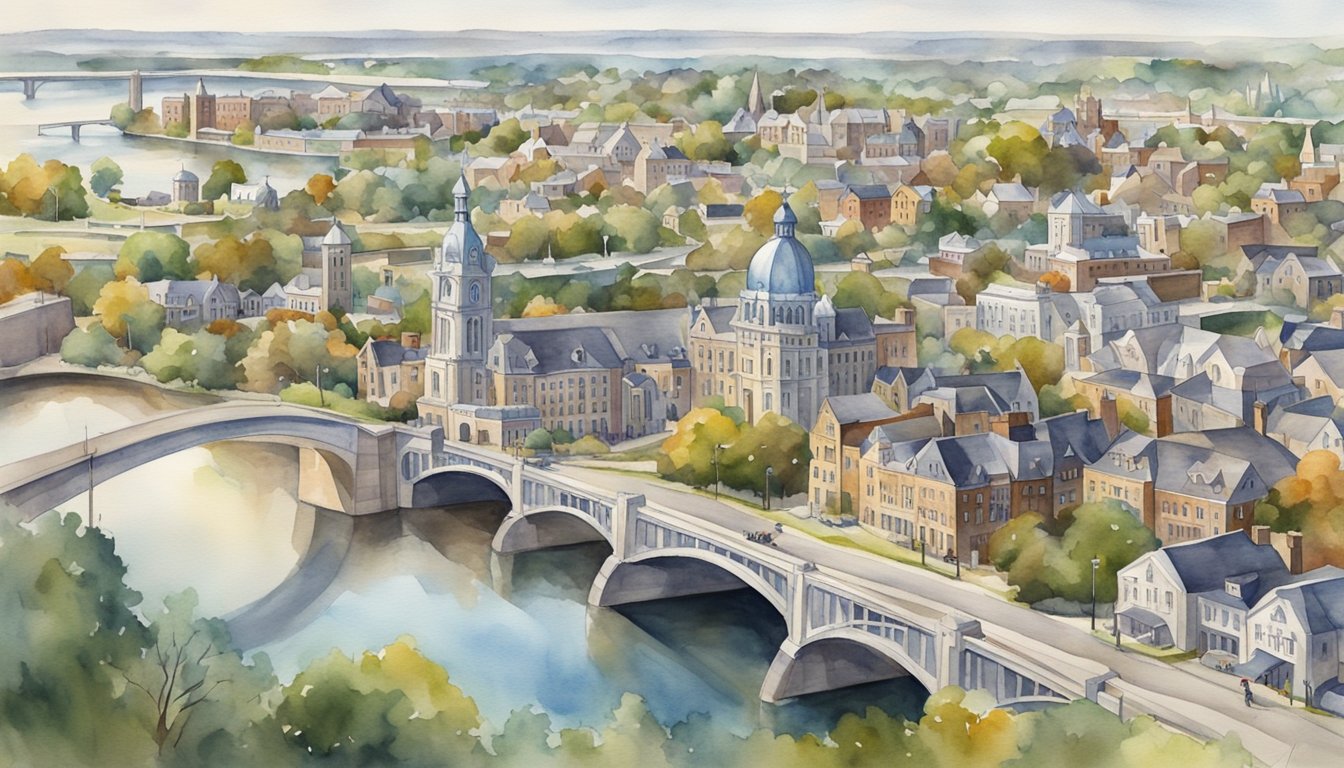
London, Ontario sits at a unique location in southwestern Canada. The city’s landscape features rivers, varied elevations, and a mix of urban and rural areas. Its population has grown steadily over time.
Land Area and Elevation
London covers 437.1 square kilometers of land. The city spreads out across a mostly flat area with some gentle hills and valleys.
London’s elevation ranges from about 200 to 280 meters above sea level. The highest points are in the north and northeast parts of the city.
The downtown core sits at a lower elevation, near where the Thames River branches meet. This area is about 240 meters above sea level.
Lakes and Rivers
The Thames River is London’s main waterway. It splits into two branches within the city limits.
The North Thames and South Thames meet in the heart of London. After joining, the river continues southwest through the city.
While not directly on any of the Great Lakes, London is close to several:
- Lake Erie: About 80 km to the south
- Lake Huron: Roughly 100 km to the north
- Lake St. Clair: Approximately 120 km to the west
These nearby lakes influence London’s climate and provide recreational opportunities for residents.
Population Growth
London’s population has grown steadily since its founding. As of 2021, the city had 422,324 residents.
The city attracts new residents through:
- Jobs in healthcare and education
- Affordable housing compared to larger cities
- Quality of life and access to nature
London’s growth comes from both natural increase and in-migration. Many newcomers arrive from other parts of Canada and abroad.
The city’s ethnic makeup is diverse. A large portion of residents claim English, Scottish, or Irish ancestry. More recent immigration has further increased London’s cultural diversity.
Indigenous History and Settlement

The London, Ontario area has a rich Indigenous history dating back thousands of years. The region was home to various Indigenous peoples before European contact and exploration began in the late 18th century.
The Ojibwa Peoples
The Ojibwa, also known as Chippewa, were the primary Indigenous inhabitants of the London area for centuries. They lived in harmony with the land, utilizing its resources for sustenance and cultural practices.
Ojibwa communities were organized into small bands, each led by a chief. They practiced a mix of hunting, fishing, and agriculture.
The Ojibwa had a deep spiritual connection to the land. They believed in the Great Spirit and conducted ceremonies to honor nature and their ancestors.
Trade was an important part of Ojibwa life. They exchanged goods with other Indigenous groups and later with European settlers.
Early European Exploration
European exploration of the London area began in the late 18th century. John Graves Simcoe, the first Lieutenant Governor of Upper Canada, played a key role in this process.
In 1793, Simcoe explored the region now known as London. He recognized the strategic importance of the area, particularly the confluence of the Thames River’s north and south branches.
Simcoe envisioned the site as a potential capital for Upper Canada. He was impressed by the fertile land and abundant natural resources.
The exploration led to increased European interest in the region. This eventually resulted in the establishment of permanent settlements, forever changing the landscape and the lives of the Indigenous peoples.
The Founding of London
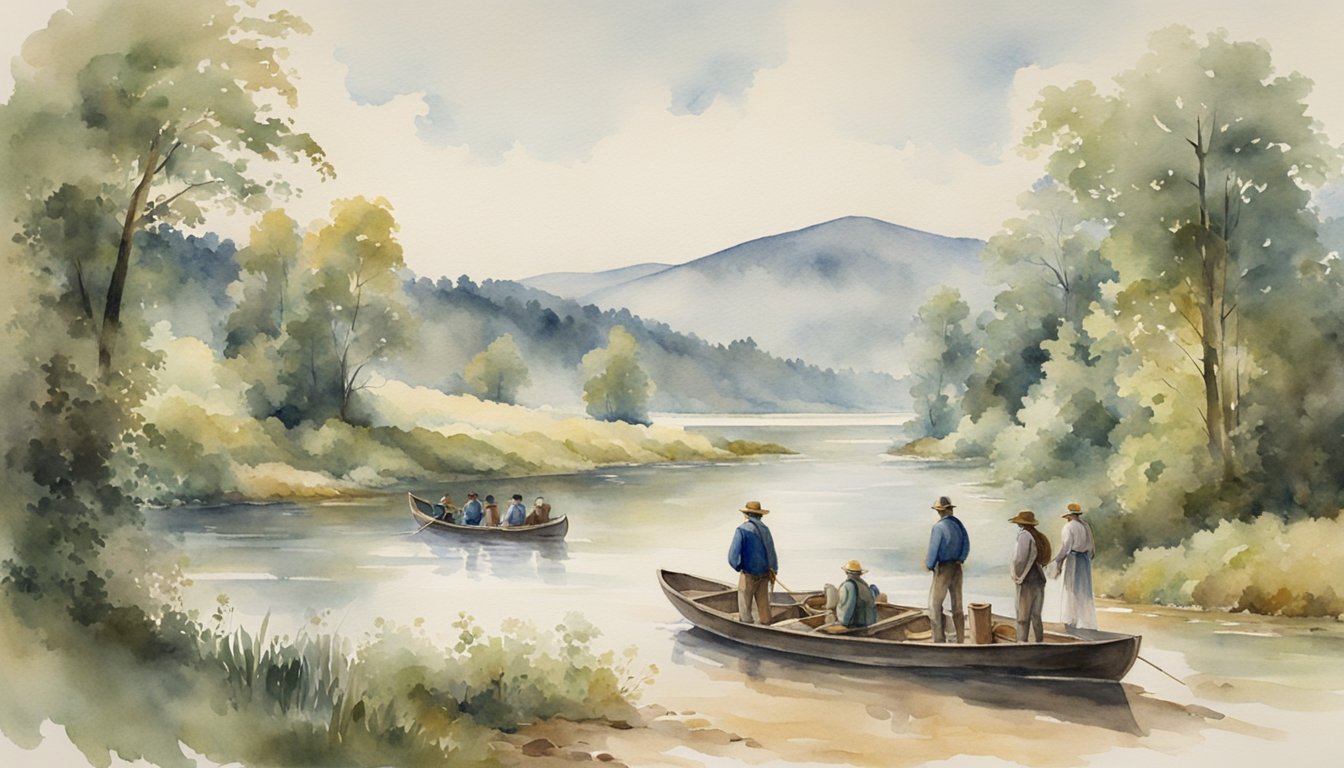
London, Ontario began as a planned settlement in the early 19th century. Its founding was shaped by key figures and events that set the stage for its growth into a major city.
The Role of Thomas Talbot
Thomas Talbot played a crucial part in London’s early development. He arrived in Upper Canada in 1801 and received a large land grant. Talbot oversaw the settlement of thousands of acres in southwestern Ontario.
He helped establish roads and infrastructure in the region. This laid the groundwork for London’s future growth. Talbot’s influence extended beyond just land development. He also shaped local politics and social structures.
His methods were sometimes controversial. But his impact on the area was undeniable. Talbot’s efforts helped attract settlers to the region around London.
London District and the Upper Canada Rebellion
The London District was established in 1826 as an administrative region. London was chosen as its seat. This decision spurred the town’s growth and importance.
In 1838, a British garrison was stationed in London. This boosted the local economy and population. The military presence was partly due to tensions leading up to the Upper Canada Rebellion.
The rebellion in 1837 had significant effects on London. While no major fighting occurred in the town, it felt the political and social impacts. The aftermath of the rebellion led to changes in local governance.
London’s role as a regional center grew stronger after these events. In 1840, it was incorporated as a town. This marked a new chapter in its development.
Strategic Developments and War History

London, Ontario played a significant role in Canada’s military history. The city’s strategic location and resources made it an important site during conflicts and military operations.
War of 1812
The War of 1812 had a major impact on the area that would become London, Ontario. Though the town itself wasn’t founded until 1826, the surrounding region saw action during this conflict.
Local militia units formed to defend against American invasion attempts. These units patrolled the area and participated in skirmishes along the Thames River.
The Battle of the Thames in 1813 took place about 80 kilometers southwest of present-day London. This battle resulted in a decisive victory for American forces over British and Indigenous allies.
After the war, veterans received land grants in the area as compensation for their service. This influx of settlers contributed to London’s early growth and development.
Battle Hill Historic Site
Battle Hill is an important historical site in London, Ontario. It’s located in what is now Gibbons Park, along the Thames River.
The hill got its name from a training ground used by local militia units in the 19th century. Soldiers practiced drills and maneuvers here to prepare for potential conflicts.
During World War I, Battle Hill served as a recruitment and training center. Many local men enlisted and trained at this site before heading overseas to fight.
Today, Battle Hill is a peaceful park. A plaque commemorates its military history and the contributions of London’s citizens during times of war.
Transportation and Industrial Growth
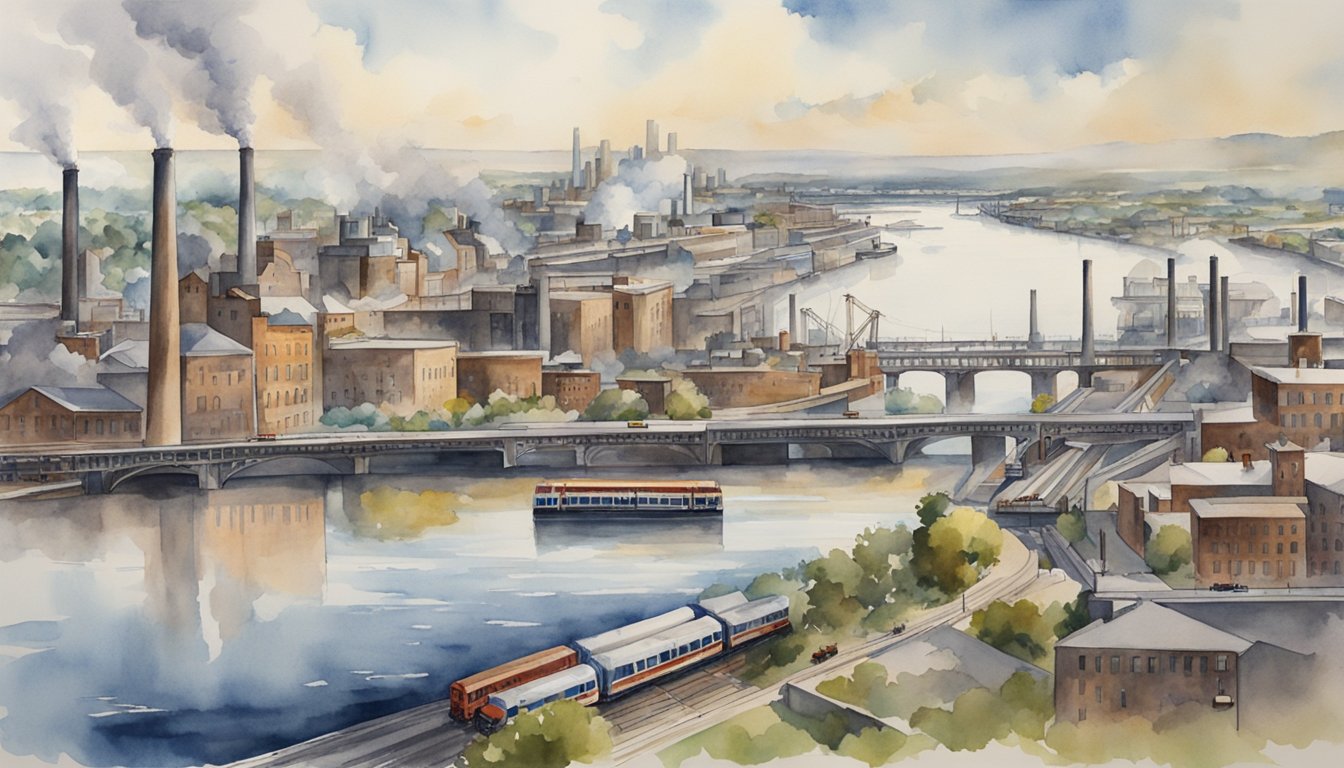
London’s development was closely tied to advances in transportation and industry. These changes shaped the city’s economy and growth in significant ways during the 19th and early 20th centuries.
The Railway Era
The arrival of the railway in the 1850s marked a turning point for London. This new mode of transport connected the city to other major centers in Canada and the United States. The railway brought more people, goods, and opportunities to London.
Train travel reduced journey times and costs. This made London a more attractive place for businesses and settlers. The city’s population grew rapidly as a result.
Railways also helped local industries. They could now ship their products to distant markets more easily. This boosted London’s economy and job market.
Manufacturing Milestones
London’s industrial sector expanded alongside its transportation network. The city became a hub for various manufacturing activities.
Early industries included flour mills and breweries. These businesses took advantage of local agricultural products.
As technology advanced, new types of factories appeared. Metalworking and machinery production became important sectors. These industries created many jobs and attracted skilled workers to the area.
The early 1900s saw the rise of automobile-related manufacturing in London. This new industry brought further growth and technological innovation to the city.
Education and Innovation

London, Ontario has established itself as a hub for higher education and cutting-edge research. The city’s academic institutions have played a crucial role in shaping its identity and driving progress across various fields.
Western University
Western University, founded in 1878, stands as a cornerstone of London’s educational landscape. The university has grown to become one of Canada’s top research-intensive institutions. It boasts a student population of over 30,000 and offers more than 400 academic programs.
Western’s campus spans 1,200 acres and features a mix of modern facilities and historic buildings. The university is known for its strong programs in business, engineering, and health sciences. Its medical school, the Schulich School of Medicine & Dentistry, ranks among the best in the country.
The university’s impact extends beyond academics. It contributes significantly to the local economy, generating billions in economic activity annually.
Fanshawe College and Technical Training
Fanshawe College, established in 1967, has become a leader in applied arts and technology education. The college serves over 43,000 students across multiple campuses in Southwestern Ontario.
Fanshawe offers more than 200 degree, diploma, and certificate programs. Its focus on hands-on learning and industry partnerships ensures graduates are job-ready. The college is known for its strong programs in aviation, broadcasting, and skilled trades.
The institution’s Centre for Research and Innovation supports applied research projects. These initiatives often involve collaboration with local businesses, fostering innovation in the community.
Robarts Research Institute
The Robarts Research Institute, founded in 1986, has emerged as a powerhouse in biomedical research. It is now part of Western University’s Schulich School of Medicine & Dentistry.
The institute focuses on several key areas:
- Imaging
- Cardiovascular sciences
- Molecular medicine
- Immunology
Robarts houses state-of-the-art facilities, including advanced imaging equipment and specialized laboratories. Its researchers have made significant breakthroughs in areas such as stroke prevention and treatment.
The institute’s work has attracted millions in research funding and led to numerous patents and spin-off companies. This has helped position London as a center for biomedical innovation.
Cultural Heritage and Institutions
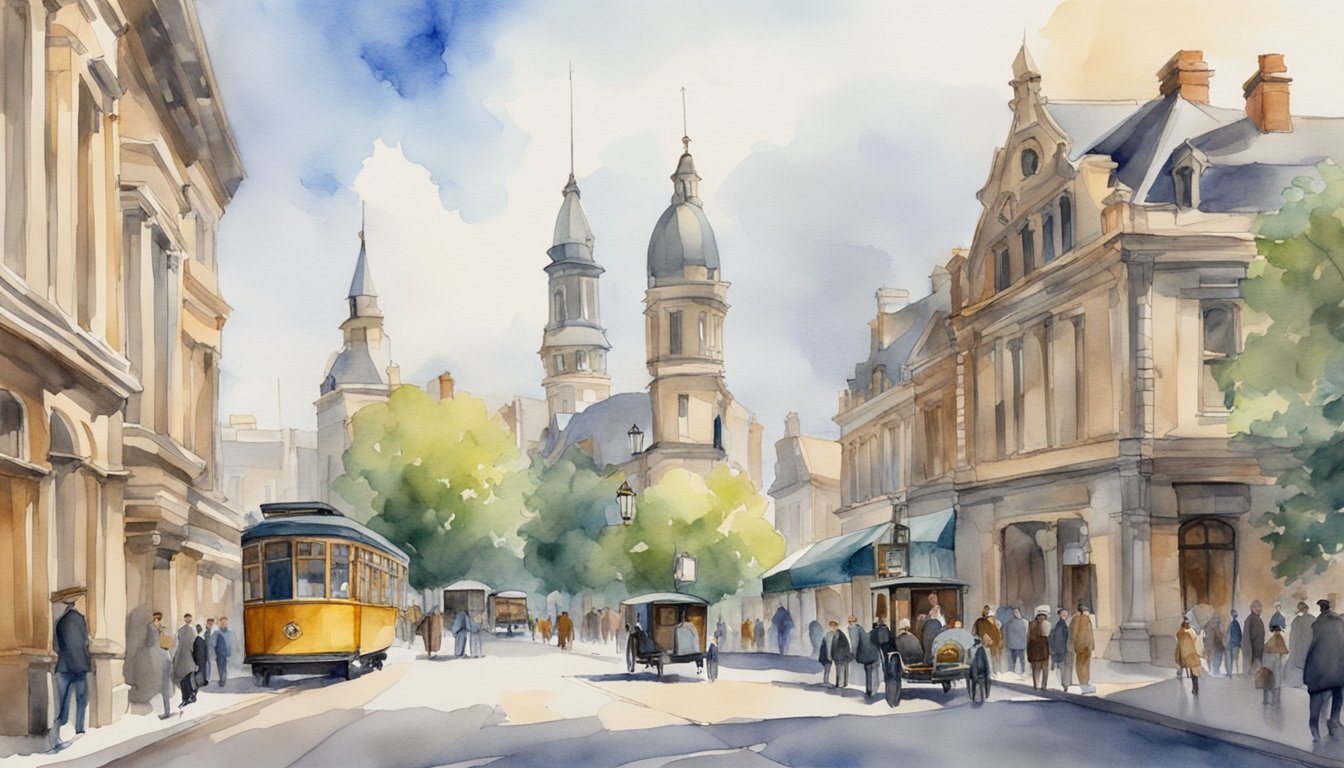
London, Ontario boasts a rich cultural heritage preserved through its many historical sites and institutions. These places offer glimpses into the city’s past and present, showcasing its development and diverse cultural fabric.
Historic Sites and Museums
Eldon House, built in 1834, stands as London’s oldest residence. It displays 19th-century period furnishings and beautiful gardens. Visitors can explore the lives of four generations of the Harris family who lived there.
Fanshawe Pioneer Village recreates rural life from 1820 to 1920. It features over 30 historic buildings, costumed interpreters, and hands-on activities. The village brings history to life for guests of all ages.
Museum London houses a large art collection and historical artifacts. It showcases both local and Canadian art, plus items that tell London’s story. The museum offers changing exhibits and educational programs year-round.
Banting House is where Dr. Frederick Banting conceived the idea that led to the discovery of insulin. Now a National Historic Site, it educates visitors about Banting’s life and the impact of insulin on diabetes treatment.
Libraries and Archives
The London Public Library system serves the community with 16 branches. It offers books, digital resources, and community programs. The Central Library downtown is the largest branch, hosting events and special collections.
Western Archives at Western University preserves important documents and records. It holds papers from notable Londoners, university records, and local history materials. Researchers use these archives to study London’s past.
The library’s Special Collections department keeps rare books and unique items. These include early London newspapers, maps, and photographs. These materials provide valuable insights into the city’s development over time.
Healthcare and Well-Being
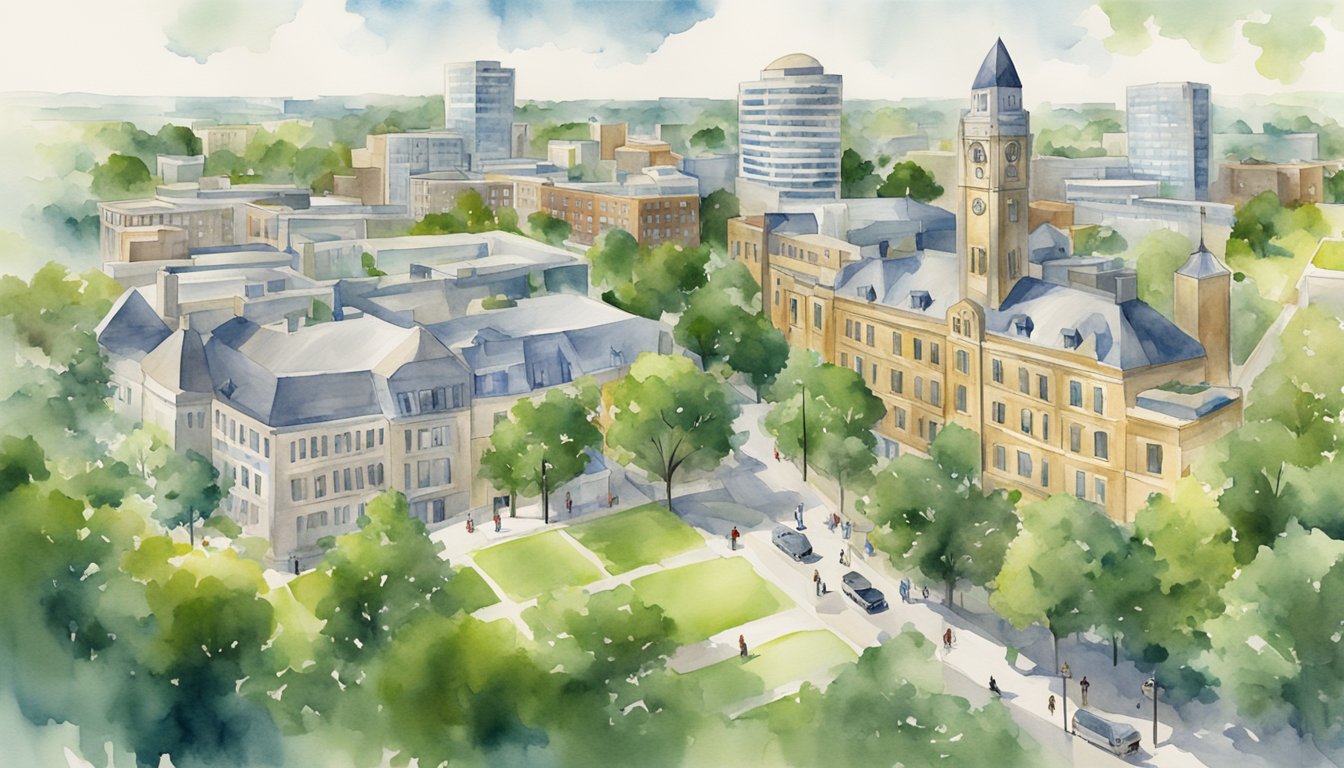
London’s healthcare system has grown significantly over the years, offering top-notch medical care and recreational spaces for residents. These facilities and areas play a crucial role in maintaining the city’s overall health and wellness.
Medical Facilities
Major healthcare institutions in London have a rich history dating back to the 1800s. These facilities have expanded and evolved to meet the growing needs of the community.
One of the city’s oldest medical centers opened its doors in 1870. It later became a key part of a broader movement to create specialized institutions for mental health care across North America.
Another important healthcare facility was established in the early 20th century to combat tuberculosis. This privately run center was situated on a 130-acre farm, providing care and treatment for patients.
Today, London boasts modern medical centers equipped with advanced technology and staffed by skilled professionals. These facilities offer a wide range of services, from emergency care to specialized treatments.
Recreational Spaces
London’s commitment to well-being extends beyond medical care to include various recreational areas for residents to enjoy.
One of the city’s largest and most popular parks covers over 300 acres. This expansive green space features walking trails, picnic areas, and sports facilities, providing ample opportunities for outdoor activities and relaxation.
The city also maintains numerous smaller parks and green spaces throughout its neighborhoods. These areas offer playgrounds, sports fields, and quiet spots for reflection, contributing to the overall quality of life for residents.
London’s recreational facilities include community centers, swimming pools, and ice rinks. These spaces promote physical activity and social interaction among residents of all ages.
The city’s extensive trail system connects many of these recreational areas, encouraging walking, jogging, and cycling as part of a healthy lifestyle.
Economic Aspects and Modern Development
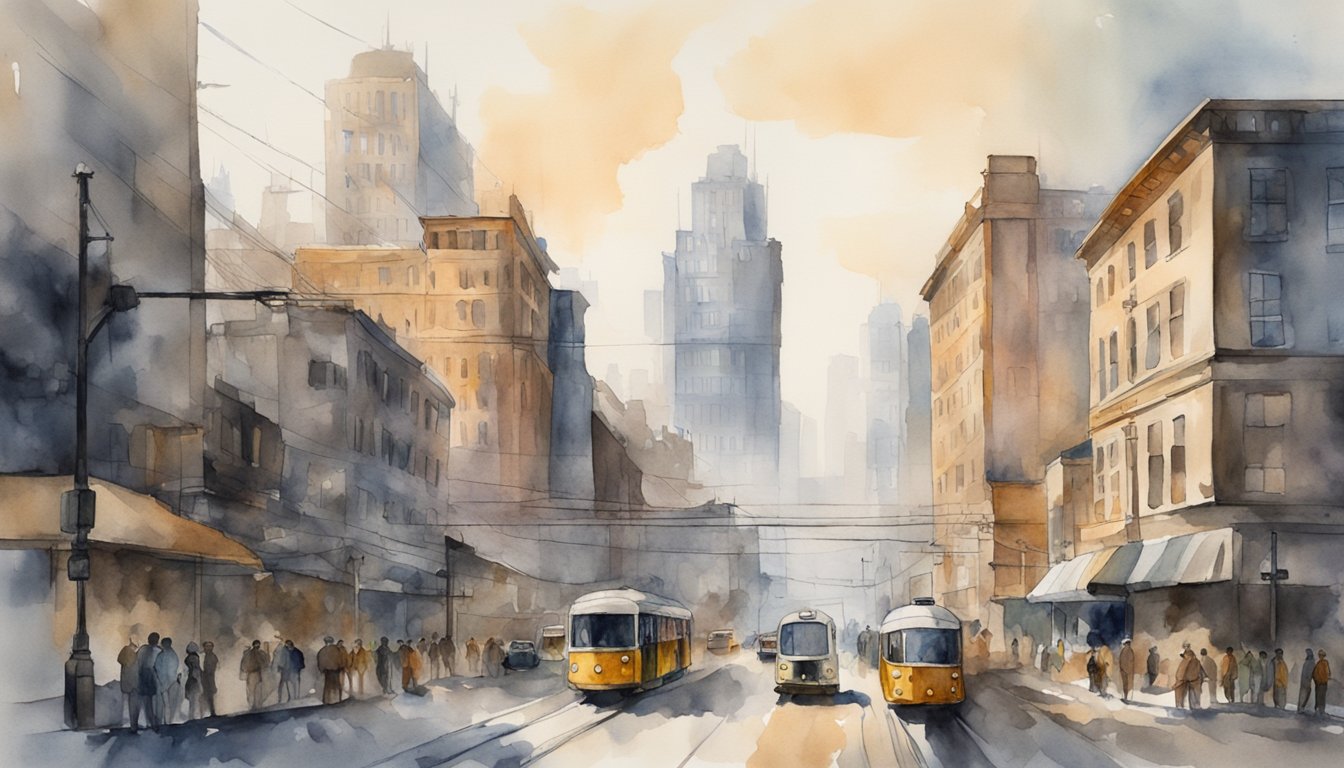
London, Ontario has grown into a diverse economic hub. Its financial and tech sectors have become key drivers of growth and innovation in recent years.
The Financial Services Sector
The city’s financial sector has deep roots dating back to the 19th century. It remains a major employer and economic engine today. Several large insurance and trust companies got their start in London and helped establish it as a financial center.
One prominent insurer founded in 1874 has been headquartered in London for over 140 years. It employs thousands and manages billions in assets. Another major trust company established in 1864 was based in London until the 1990s.
These and other financial firms have contributed greatly to London’s economy over the decades. They’ve provided stable, high-paying jobs and supported community initiatives.
Technology and Innovation
London’s tech scene has boomed in recent years. The city now hosts over 300 tech companies employing around 9,000 people.
Major areas of focus include digital media, software development, and cybersecurity. Several tech incubators and accelerators have launched to support startups. These include programs at Western University and Fanshawe College.
The city has worked to attract tech talent and companies. It offers support services and networking events for the sector. London has also developed specialized tech zones with high-speed internet and other amenities.
This growth has helped diversify London’s economy beyond traditional industries. It’s created new opportunities for local graduates and tech workers.
Urban Evolution
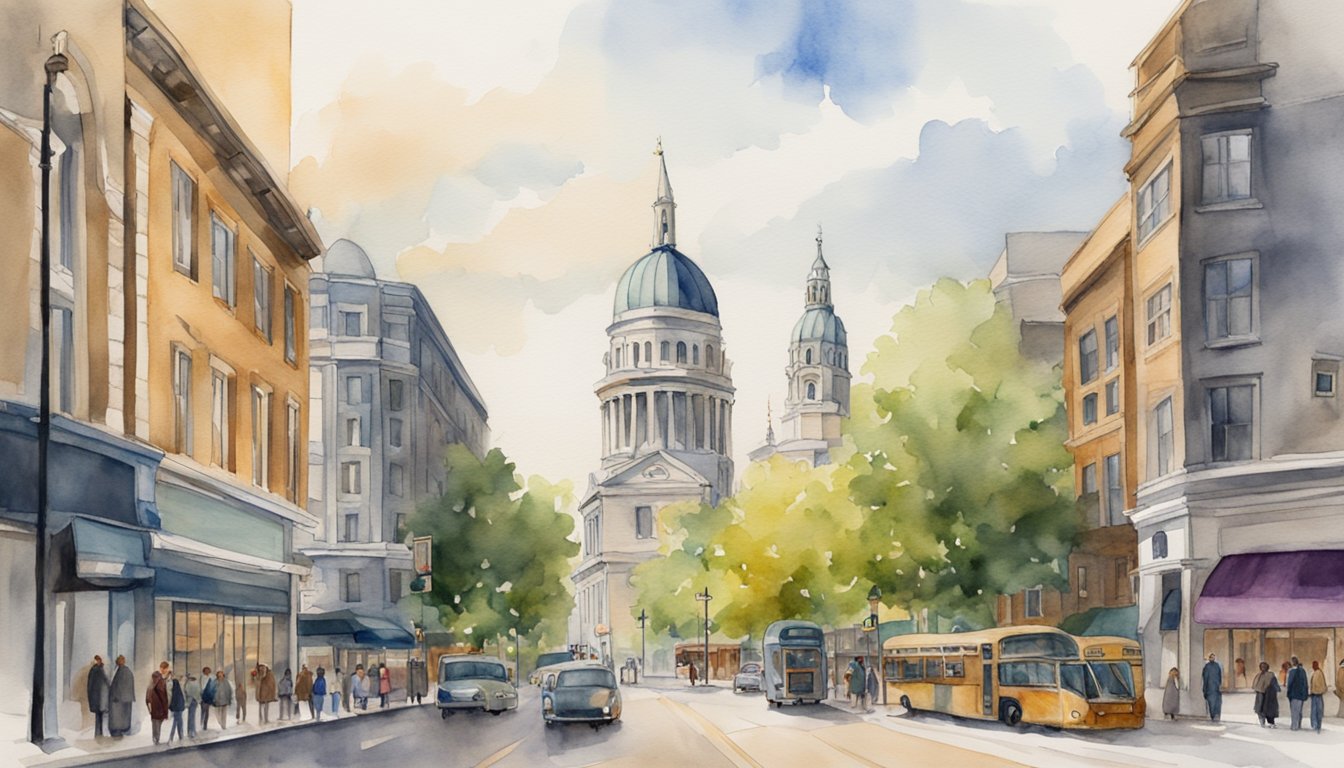
London, Ontario underwent significant changes in its urban landscape during the late 20th century. These changes reshaped the city’s boundaries and infrastructure, setting the stage for future growth and development.
1993 Annexation Impact
The 1993 annexation marked a turning point for London. It expanded the city’s borders, adding 25,000 new residents and nearly doubling its land area. This growth brought both opportunities and challenges.
New neighborhoods sprang up in the annexed areas. The city had to extend services like water, sewage, and public transit to these regions.
The annexation also changed London’s demographics. It brought in more rural and suburban populations, shifting the city’s overall character.
Infrastructure and City Landscape
London’s infrastructure evolved to meet the needs of its growing population. Road networks expanded, with new arteries connecting the core to outlying areas.
The city invested in public spaces. Parks and recreational facilities were developed, enhancing the quality of life for residents.
London’s urban environment saw significant changes. High-rise buildings began to appear, altering the skyline. The downtown core underwent revitalization efforts to maintain its vitality.
Public transit systems were upgraded to serve the larger city area. Bus routes were extended and frequency increased to accommodate commuters from newly incorporated regions.
Notable Personalities and Legacies
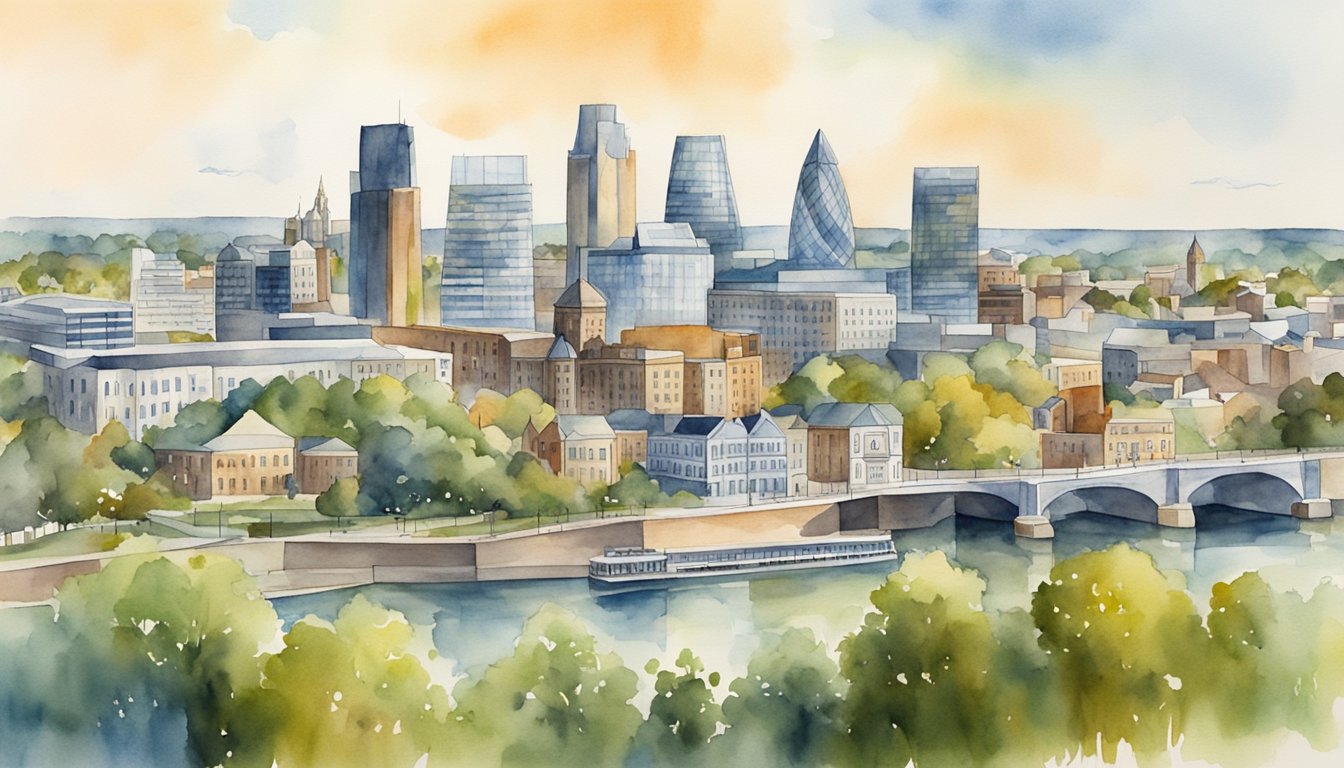
London, Ontario has been home to many influential figures who have left their mark on history. These individuals have made significant contributions in fields like medicine and historical research.
Sir Frederick Banting
Sir Frederick Banting was a famous doctor born in London, Ontario. He made a groundbreaking discovery that changed the lives of millions. In 1921, Banting and his team found insulin could treat diabetes.
This finding earned Banting the Nobel Prize in 1923. He became the youngest Nobel laureate in medicine at age 32. Banting’s work at the University of Toronto led to the first successful use of insulin on human patients.
His legacy goes beyond medicine. Banting was also an artist and served in both World Wars. The Banting House in London is now a museum that honors his life and work.
Prominent Historians
London has produced several notable historians who have helped preserve the city’s rich past. These scholars have written books, given talks, and led research projects about London’s history.
One key figure is Michael Baker, who co-authored “100 Fascinating Londoners”. This book tells the stories of over 100 important people from London’s past. It was published for the city’s 150th birthday in 2005.
The London and Middlesex Historical Society has played a big role in recording local history. Members have written many articles about London’s past. These writings are now available online for the public to read and learn from.
Frequently Asked Questions
London, Ontario has a rich history dating back to its founding in the early 19th century. The city has grown and changed significantly over the years, shaping its unique character and culture.
When was London, Ontario founded?
London, Ontario was founded in 1826. It was chosen as the site for the future capital of Upper Canada by Lieutenant-Governor John Graves Simcoe.
The city was officially incorporated in 1855, marking its transition from a small settlement to a growing urban center.
What is the history of London, Ontario?
London’s history began as a small military garrison. It grew into a bustling town in the mid-1800s.
The city expanded through annexation of nearby suburbs in the late 19th and early 20th centuries. This included London East, London South, and London West.
By 1914, London had reached a population of about 55,000 people.
What are some notable historical events in London, Ontario?
One significant event was the Great Fire of 1845, which destroyed much of the downtown area. This led to rebuilding efforts that shaped the city’s architecture.
The arrival of the railway in 1853 boosted London’s growth and economic development. It connected the city to other major centers in Canada and the United States.
Who are some famous people from London, Ontario?
London has been home to many notable individuals throughout its history. This includes politicians, artists, athletes, and innovators.
Some well-known figures include Guy Lombardo, the famous bandleader, and Rachel McAdams, the acclaimed actress.
What is the demographic composition of London, Ontario’s population?
London’s population has diversified over time. It includes people from various ethnic backgrounds and cultures.
The city has seen growth in immigration, contributing to its multicultural character. Exact demographic breakdowns change over time and can be found in recent census data.
Which areas of London, Ontario are known for their historical significance?
Downtown London is home to many historic buildings and landmarks. This includes the Middlesex County Courthouse, built in the 1820s.
Woodland Cemetery, established in 1879, is another area of historical importance. It holds records dating back over 160 years.
The Blackfriars neighborhood features many well-preserved 19th-century homes. These showcase the city’s architectural heritage.
